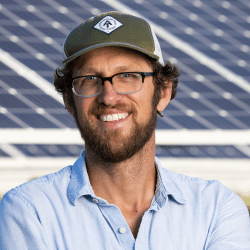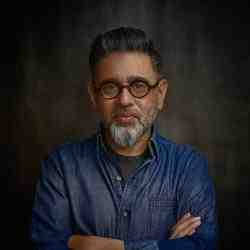Introduction
Ismael Ferreira is working to make Brazil's declining sisal industry competitive and to put more profits into the hands of the crop's many small producers. Grown in the dry Northeast, sisal is a drought-resistant cash crop that helps these farmers stay on their subsistence farms.
The New Idea
Brazil continues to be the world's largest sisal producer, but the industry has been in steady decline for decades. Ismael plans to revitalize the industry through the 600,000 small producers in the Northeast who grow sisal as their main cash crop, but who lack autonomy and prosperity.These farmers have already come a long way since 1984, when Ismael began a four-year journey through bureaucratic labyrinths to finally succeed in winning organized small producers the right to export their sisal directly. Ismael also successfully scouted funds for the expensive central thrasher that the nascent growers cooperative needed to process sisal for export. Since building the thrasher, the growers' average earnings from sisal have increased 14 percent, and their collective production has grown from 70 to 300 tons per month. That still is small scale in export terms, but the cooperative now has buyers abroad and an office and a broker in Salvador, the capital of Bahia.
Those are first steps towards autonomy for growers who historically have sold to brokers for large exporters interested in paying as little as possible. Aside from selling directly to overseas buyers, the small growers plan to fabricate more finished products such as rope and carpet backing. Ismael is actively looking for new markets, resources, allies, and support. In that search, he has turned up situations ripe for direct grower-buyer links. One of these new direct purchasers is a Peruvian importer who previously was buying Brazilian sisal from Portugal.
Ismael also hopes to build an informal alliance of small growers to jointly push for policy changes, including some to help the Brazilian sisal industry become more globally competitive. Towards this goal, he increasingly meets with small-producers' organizations of other crops and other regions to share with them the sisal cooperative's mistakes and victories. Ismael hopes to encourage similar efforts across Brazil to give small producers greater control over their livelihoods.
The Problem
A 1989 report by the state government of Bahia gave a clear indication of the direction in which Brazil's sisal industry was heading¾thousands of hectares of sisal fields had been abandoned as Brazil lost out to competition from Africa and Mexico and to synthetic substitutes.Ismael contends that large Brazilian exporters have not pursued new markets or uses, or improved the quality of sisal, and thus have lost ground to more progressive foreign competitors. He also faults the current industry structure and lackadaisical large enterprises for not getting the government to lower taxes or guarantee prices as it does for coffee, soy, and other exports. Businesses and ambitious entrepreneurs have found little reason to invest in this sector, especially given the region's historical political economy, which for centuries has been dominated by its large-plantation owners.
Small producers have the added challenge of trying to break into a long-established export industry that is hardly eager for new competitors, least of all competitors that threaten to reduce the leverage the established firms have vis-à-vis their low-cost suppliers. Infrastructure costs, such as transportation and processing, can be high. And the extreme complexity of exporting is greatly magnified in Brazil: transportation and communication facilities are old and uncertain, the economy is unstable, and the rules and exchange rates can change suddenly.
The Strategy
Ismael asks: "If Africa and Mexico can maintain and modernize their sisal industries, why can't Brazil?" Ismael believes the small growers can do this by becoming a force within the industry through a cooperative, and then lobbying the government to help revitalize the industry through favorable export policies and through product and market research. He has gathered information, for example, on how African producers earn US$1 billion a year from selling a pharmaceutical byproduct of sisal to industrialized countries. Likewise, sisal bagasse is increasingly seen as a renewable fuel for thermal electrical energy, but two thirds of bagasse in Brazil goes unused. To force more attention to these issues the cooperative must first gather strength.
A core of 1,000 families now forms the cooperative organized through the Association of Small Farm Producers of Bahia. They have joined to export sisal processed at the collective thrasher. Families reinvest in the cooperative and still earn 14 percent more than they did selling sisal individually.
After obtaining export credentials for the cooperative, Ismael's next challenge was to break into the market. Like many industries, sisal is top-heavy with large companies with long-established market ties. But through persistent questioning and research, Ismael ferreted out the names and addresses of dozens of sisal importers and wrote them all letters describing the cooperative. A few expressed interest, and he arranged a broker to handle the paperwork below usual cost.
Ismael wants the cooperative to function as any large exporter, always looking for new customers, inviting prospective buyers to visit, cultivating allies in political and financial circles, studying ways to expand, and steadily cutting costs, especially by seeking out direct producer-consumer sales, thereby avoiding intermediary commissions. As the cooperative grows and begins to make end products, both producers and buyers should benefit from greater economies of scale.
To attract the attention of more small sisal growers, Ismael uses local rural organizations and local media to disseminate news of the sisal industry and involve more small producers in the cooperative. He draws, too, on his background and contacts in the community and small-producer movements.
The Person
Ismael is the son of a sisal grower in Valente, the municipality where the cooperative is based and the thrasher was built. The local economy there depends on sisal production. Ismael studied accounting in secondary school and worked as collection manager at a small-town bank.In 1981, Ismael went to work for the Movement of Community Organizations, or MOC, which originated in the liberal Catholic church of the region but later dissolved its church affiliation. At the MOC, Ismael developed communal income-generating projects such as a bakery and a sandal factory. He now directs the movement's community economic projects.
Ismael also became the first manager of the Association of Small Producers of Bahia, based in Valente. There, he gave farmers technical assistance on storing, grinding, and selling corn. He also began discussions with sisal growers about the problems they were having selling their product. Those discussions produced the seed for today's functioning direct-export cooperative.
As for the future, Ismael says, "I hope these popular movements won't need me and will be taking care of themselves. I hope I'm there to see it . . . Someday I plan to be leading other movements."




